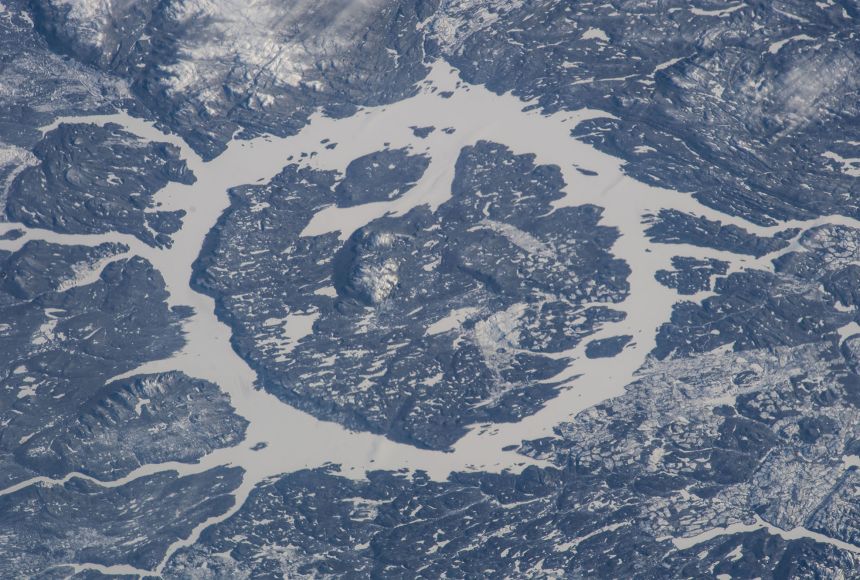We live on Earth's hard, rocky surface and eat the food that grows in the soil. We breathe the air that surrounds the planet and drink the water that falls from the sky. But Earth did not always exist within this expansive universe, and it was not always a welcome place for life.
A Spinning Disc of Gas and Dust
Billions of years ago, Earth, and the rest of the solar system existed only as an enormous cloud of dust and gas. Eventually, something happened to create a disturbance in that dust cloud, setting forth a chain of events that led to the formation of life as we know it. One common hypothesis among scientists is that a distant star collapsed, creating a supernova explosion, which disrupted the dust cloud and caused it to pull together. This formed a spinning disc of gas and dust, known as a solar nebula. The faster the cloud spun, the more the dust and gas became concentrated at the center, further fueling the speed of the nebula.
Over time, the force of gravity at the center of the cloud became so intense that hydrogen atoms began to move more rapidly and violently. Charged hydrogen atoms called protons began combining, or fusing, and forming helium. This process released massive amounts of energy leading to the formation of the star that is the center point of our solar system, the sun, roughly 4.6 billion years ago.
The formation of the sun consumed more than 99 percent of the matter in the nebula, but the remaining material began to clump together into various masses. The nebula cloud was still spinning, and clumps of matter continued to collide with others. Eventually, some of those clusters of matter grew large enough to create and maintain their own gravitational pull, which shaped them into the planets and dwarf planets that make up our solar system today.
At Earth's Beginning
Earth is one of the four inner, terrestrial planets in our solar system, along with Mercury, Venus, and Mars. These planets are relatively small and rocky because rocky material was the only substance that could exist close to the sun and withstand its heat.
At its beginning, Earth was unrecognizable from its modern form. At first, it was extremely hot, to the point that the planet likely consisted almost entirely of molten magma. Over the course of a few hundred million years, the planet began to cool and oceans of liquid water formed. Heavy elements, like iron and nickel, began sinking past the oceans and magma toward the center of the planet. As this occurred, the planet became differentiated into layers, with the outermost layer being a solid covering of relatively lighter material while the denser, molten material sunk to the center.
Before getting to a point where the materials separated into layers, scientists think there were three different stages that formed Earth.
Stages of Development
The first stage is known as accretion, when particles within the solar system collide with each other forming larger and larger bodies. The next stage is thought to have occurred more than 4.5 billion years ago. A protoplanet crashed into the very young planet Earth, which might have resulted in the formation of Earth's moon.
The final stage of development saw the planet get bombarded with asteroids. They slammed into Earth, the moon, and other inner planets contained a significant amount of water in their minerals. The asteroids hit the surface of Earth at a great speed, shattered, and melted. Experiments suggest nearly 30 percent of the water in the asteroids could have remained on Earth.
Earth's early atmosphere was most likely composed of hydrogen and helium. As the planet changed, and the crust began to form, volcanic eruptions occurred frequently. These volcanoes pumped water vapor, ammonia, and carbon dioxide into the atmosphere around Earth. Slowly, the oceans began to take shape, and eventually, early life evolved in those oceans.
Around 2.7 billion years ago, oxygen produced by bacteria undergoing photosynthesis began to build up in the atmosphere. In a few hundred million years, it changed the composition, or the makeup, of the atmosphere. Our modern atmosphere is made up of 78 percent nitrogen and 21 percent oxygen, among other gases. Life on Earth evolved to thrive in that atmosphere.
